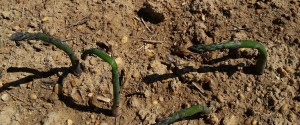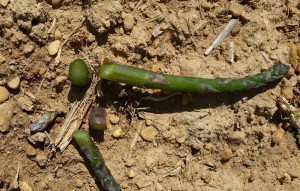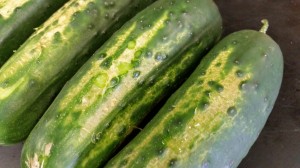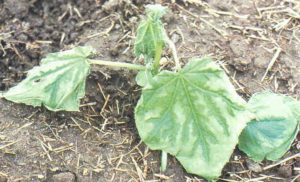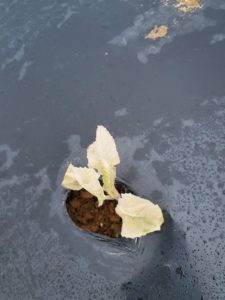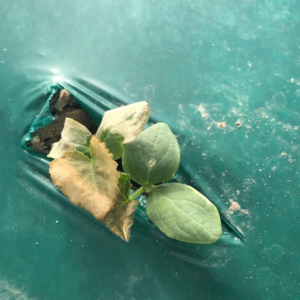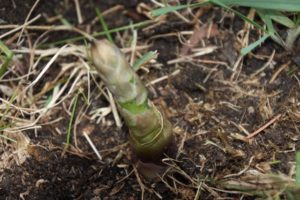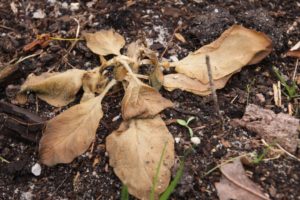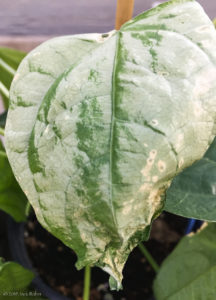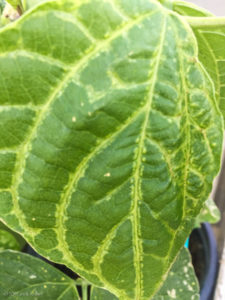Spear damage in asparagus can be caused by diseases such as Phytophthora spear and crown rot and purple spot. However, other environmental factors during the spring can damage spears as they emerge from the soil.
| Freeze Injury – About 10 days ago temperatures dipped well below freezing for a night or two, and combined with the higher than normal temperature this spring, some asparagus fields that had already started to produce spears were hit with injury. Affected spears will be bent/distorted and begin to breakdown and rot (Fig. 1a).
Cutting frozen spears will show the discoloration of the spear caused by the freeze (Fig. 1b). |
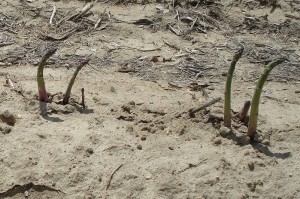 Fig. 2. Wind damage of asparagus spears. Notice how all spears are pointed in the same direction |
Wind – Periods of heavy winds during emergence will cause spears to bend. High winds can cause one side of the spear to dry out quicker than the other causing the spear to bend and point in the direction of the prevailing wind. An asparagus planting is suffering from wind damage if most of the bent spear heads in the bed are pointing in the same direction (Fig.2). |
